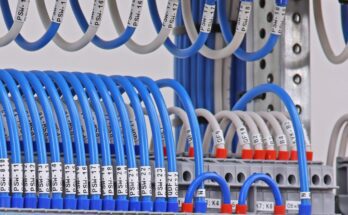The final crucial question: to what extent do children spread the coronavirus once infected? “If you look at the peer-reviewed literature, it’s very mixed. The simple answer is we don’t know,” says Jeffrey Shaman, an infectious diseases expert at Columbia University. A nine-year-old boy with coronavirus in the French Alps in February did not transmit the virus to anyone else despite exposure to more than 170 people, including close contact within schools. However, we shouldn’t read too much into a study of one. On the other hand, researchers from Berlin University tested 3,712 covid-19 patients, 127 of whom were under 20, and concluded that children can carry the same viral load as adults, which seems to correlate with infectiousness.
One of the biggest fears is that a child could pick up the coronavirus at school and then bring it home to Grandma. “The risk to the kids is low, and it’s not bad for me or my partner, but I do worry about them going back to school and then seeing my parents,” says Kirsten Minshall, a father of two boys aged 9 and 11 who lives in a seaside town in Kent in the UK.
It is possible for children to introduce covid-19 into their household–a study from China identified three occasions when a child under 10 was the “index case” in a home. But it seems to be rare.
The crux of the issue is data, or more precisely a lack of it. Because children are less likely to catch covid-19, and are likely to have milder symptoms if they do, they are less likely to be seen by doctors or tested. That means high-quality, reliable data on this question is hard to come by.
A large National Institutes of Health-funded study in the US that launched last month should help. It’s going to test nasal swabs from nearly 2,000 families in 10 cities every two weeks. The aim is to work out what role children play in transmission, says Hartert, who is leading the study. Enrollment has just finished, and she expects the first results within weeks.
Population-wide serological surveys–which test for the presence of antibodies against covid-19 in blood samples–will also help plug the data gap. Studies comparing areas where schools have reopened and those where they have not could be hugely helpful, too. If it ends up being the case that children are less susceptible to infection, that suggests closing schools won’t be a very important way to reduce transmission across society, says Rosalind Eggo, an infectious disease modeler at LSHTM, who was involved in the study. However, she warns that it’s tricky to disentangle the closure of schools from all the other actions that were taken at the start of the pandemic.
“It’s very difficult to work out what happened to transmission when schools closed, because that happened at the same time as a lot of other interventions, like a general lockdown, distancing, and increased hygiene,” she says.
But none of this addresses a major group, without which no school can function: teachers.
“Some teachers will be elderly, and there’s no easy answer for them. They’re incredibly high risk,” says Hartert. Many of the schools that have reopened around the world have introduced distancing measures and schedules that minimize contact between school groups.
“I’m less afraid teaching than I am going to the supermarket,” says Marleen Slingenbergh, the head of biology at Alexandra Park School in London, where some schools have reopened for a small proportion of their students. She says that’s because the school has prioritized safety–students have to sanitize their hands between lessons, teachers are required to stay at least two meters away from students at the front of the class, and there are strict “one at a time” bathroom policies, for example.
That said, the majority of students haven’t returned yet. Slingenbergh fears it won’t be possible to maintain the safety measures when school returns in full in September. “With one week on, one week off, it’s possible. When we have 1,600 students, it will be tricky, especially during the changeover between lessons,” she says.
Ultimately, the crucial thing for schools may be their ability to respond flexibly–closely monitoring for any potential outbreaks and quickly closing when necessary.
There is, understandably, a lot of pressure from parents to keep their children safe, and many are still not comfortable with sending them back to school, says Slingenbergh. But most of them recognize it’s a delicate balance. “It’s all about weighing up the risks of covid, the kids getting proper schooling, and looking after their mental health,” Minshall says.


